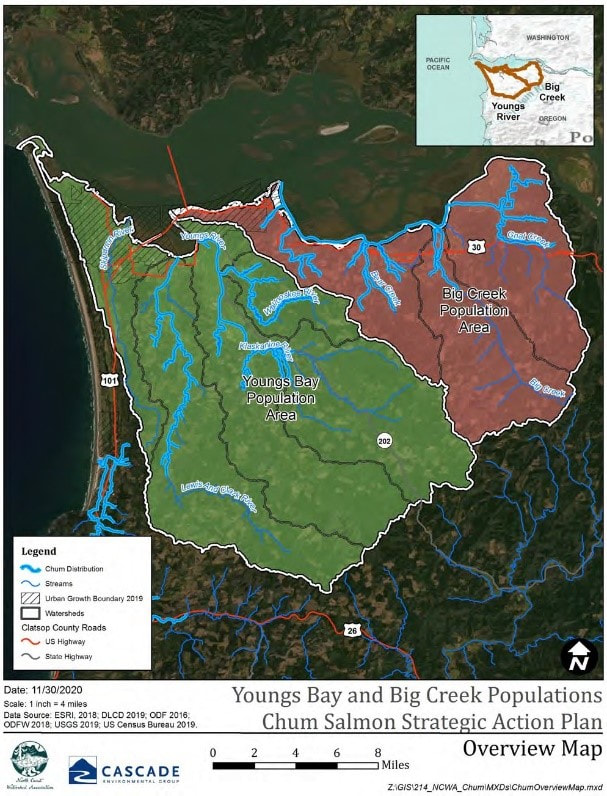Strategic Restoration Action Plan for Youngs Bay & Big Creek Chum Salmon Populations
Clatsop County, Oregon
|
Once abundant, Columbia River chum salmon have declined more than any other salmon population and are listed as threatened under the federal Endangered Species Act. The Lower Columbia River Chum Partnership (Partnership) is a collaboration of the Astoria-based North Coast Watershed Association, residents, farmers, timber companies, nonprofits, and state and federal agencies cooperating to restore the rivers, streams, and watersheds supporting Oregon’s Big Creek and Youngs Bay chum populations.
Cascade worked with the Partnership to develop and implement a Strategic Restoration Action Plan. The Action Plan, a 10-year road map that describes the Partnership’s activities, 2021 – 2031, outlines steps to help recover the historically significant chum populations through watershed restoration in collaboration with local property owners and stakeholders. The restoration actions address degraded stream and riparian habitats and the land management activities that have disrupted watershed processes that create and shape the habitats that chum and other salmon populations require. The Partnership’s strategy integrates (1) short-term, “structural” restoration actions (e.g., placing large wood in stream channels) designed to provide rapid improvements in chum spawning and rearing habitats, with (2) long-term, process-based restoration, which can take decades to affect aquatic habitats. |

